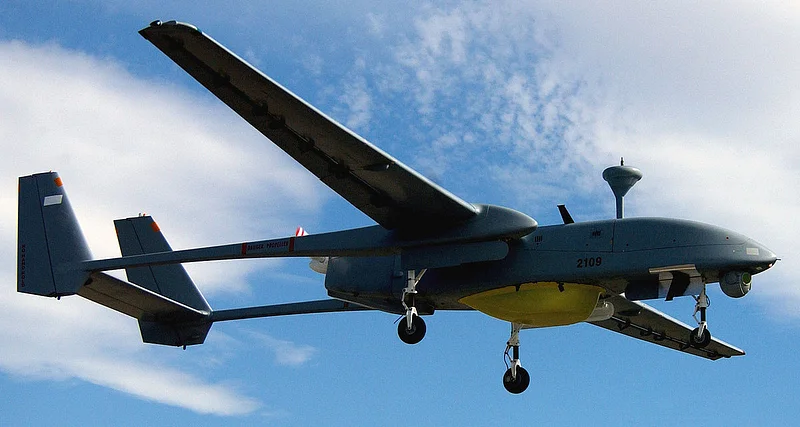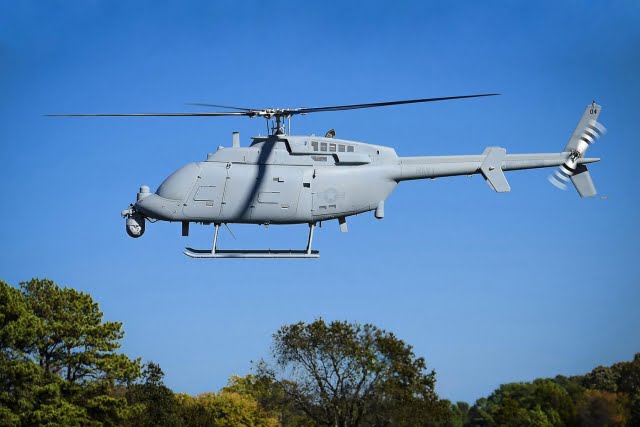20 Years Of Fiasco: Indian Navy Formally Begins Its Search For “Naval Drones” To Strengthen Its Position In The Indian Ocean

- According to Andreas Rupprecht, a specialist in Chinese military aviation, drones were seen on the deck of the aircraft carrier Shandong
- The Unmanned Carrier-Launched Airborne Surveillance and Strike programme gave birth to the unmanned refuelling drone known as the MQ-25.
The Ministry of Defense (MoD) and the Indian Navy stated that the NUAS would be used for surveillance activities, including signals intelligence (SIGINT), target acquisition, surveillance, and maritime domain awareness surrounding a naval task force in a Request for Information (RFI) published on June 29, 2022.
The RFI paper from the MoD further indicated that the secondary duties will involve assistance with SAR, anti-piracy, and anti-terrorist activities.
An apparent benefit of having a ship-based drone is that the Indian Navy could always forward-deploy it.
With more PLA Navy warship excursions into the Indian Ocean area (IOR), India has boosted its surveillance missions and bolstered operational deployment in the IOR.
More than a year after the government approved the plan to purchase ten shipborne drones in January 2021, the RFI has been put out there.
The government has approved a proposal that the Indian Navy had submitted to the Defense Ministry in “quick track mode,” which calls for the purchase of 10 naval shipborne unmanned aerial systems for around Rs 1,300 crores.
The drones would reportedly be bought through an open bid procedure under the “Buy Global” category, which refers to purchasing defence equipment from foreign or Indian vendors. The most recent RFI, however, is focused on buying platforms that were developed locally.
According to the RFI, the submitting companies must also “offer indigenous software, which is employed in their proposal to run applications on their equipment/system.”
This fits with the “Atmanirbhar Bharat” scheme’s increased emphasis on defence localization.
One of the additional requirements established by the MoD is the use of composite materials for the airframe. An EO/IR system and an automatic identification system (AIS) with a minimum endurance of 10 hours should make up the primary payload for the NSUAS.
The aircraft also needs to have a 20-minute reserve endurance. The RFI states that the NSUAS should be able to loiter at 5,000 feet while moving at a speed of 100 km/h.
Indian Navy’s Long Quest For Shipborne UAS
Over the past 20 years, the Indian Navy has made several attempts to purchase shipborne UAS or drones. Since the middle of the 2000s, a number of foreign companies have made a variety of shipborne drone system proposals to the Indian Navy.
Even though the popular Austrian Schiebel Camcopter was tested by the Indian Navy in 2007 off the Indian Patrol Vessel INS Sujata, no contract could be reached.
Due to its long-term requirement for the capabilities, the Indian Navy once contributed to a combined effort by the state-owned Hindustan Aeronautics Limited (HAL) and Israel Aerospace Industries (IAI) to transform the Chetak helicopter into an autonomous drone platform. Due to technical issues, the project, known as naval rotary UAV (NRUAV), was a complete failure.
Even in 2011, IAI offered to test unmanning the renowned Dhruv helicopter platform, but the Indian Navy declined to take that suggestion further.

Both the Heron and Searcher Mk-II unmanned aerial vehicles are being used by the Indian Navy, however neither are shipborne.
Former Vice-Admiral of the Indian Navy Shekhar Sinha said in a statement to EurAsian Times that “Shore-based UAV covers a considerably broader region over the sea for observation.
It’s possible that ships won’t have the luxury of extended monitoring in their area at the time of their choosing. Depending on the target’s value, the shore-based UAV provides shore authorities with a general picture to help with a more focused local search.
Ships, however, travel a great distance, are located far apart from one another, and therefore require surveillance in a particular location inside their operational area. This can only be achieved if the ship is equipped with a UAV, even if it has a far smaller operational range.
The veteran’s remarks show how useful these unmanned aerial systems are for conducting micro-surveillance.
Modern P-8I Poseidon aircraft and Kamov Ka-31 helicopters are now available to India for conducting Intelligence, Reconnaissance, and Surveillance (IRS) missions over a significant portion of the ocean.
Since the middle of the 2000s, the Indian Navy has received a broad variety of shipborne drone systems, most notably the Northrop Grumman MQ-8 Fire Scout in 2009–2010 and the Saab Skeldar.
Boeing has long retained the ScanEagle as a navy shipborne option, despite the Indian Navy’s apparent preference for rotorcraft.
Additionally, it leased two MQ-9 Sea Guardian drones from the US for a year in November 2020. An effort has been made to buy 30 MQ-9 drones, 10 for each service, since the lease expired in November 2021.
They have a surveillance capacity of about 30 hours. To discourage China, the efforts to step up these activities have been strengthened.
Deterring The Dragon
Due to China’s development outside its local region and into the Indian Ocean, the Indian Navy has increased its vigilance and is taking coordinated action to boost its marine surveillance.
Through the Gwadar port in Pakistan, which China is building as part of the CPEC project, it has access to the IOR.
Additionally, it now has a foothold in what is considered India’s backyard thanks to the purchase of the Hambantota port in Sri Lanka. Furthermore, Djibouti, which is in the Indian Ocean, is home to a military installation for it.

In order to balance Beijing, this has led to India playing a more active role in the Indo-Pacific area.
The numerous task groups deployed in various regions of the vast Indo Pacific will benefit from having a more powerful maritime domain awareness in the near areas of their active interest.
They would be able to operate more freely as a result. The freedom offered by shipborne UAVs is also greater than that of land- or shore-based UAVs. a report from the United States claims
China has the largest Navy in the world in terms of fleet size, according to a report by the United States.
Its naval capability is also always improving. China’s first helicopter drone, the AR-500B, flew for the first time in 2020. The chopper is intended for extensive maritime monitoring.
It also has a CH-5 fixed-wing naval reconnaissance drone that is carrier-based.
Not only that, but on May 18, 2022, China unveiled the Zhu Hai Yun, a remotely controllable unmanned ship that can travel alone on broad waters and transport numerous drones.
According to Andreas Rupprecht, a specialist in Chinese military aviation, drones were seen on the deck of the aircraft carrier Shandong on June 1, the EurAsian Times reported.
Chinese media reports claim that the CW-40 dual-purpose UAV was made primarily for use in reconnaissance, search, and surveillance missions.
India may be desperate for its own unmanned shipborne system because of these developments in maritime technology and China’s expanding expansionist activities in the area.
Despite having a sizable budget for purchases and a thriving R&D sector thanks to government organisations, the Indian armed services are nevertheless generally under-equipped with remotely piloted systems. Despite this, the drone fleet of the armed services is a varied mix of international and domestic systems.
I have no idea how quickly the Indian Navy will complete this tender, but better intelligence-gathering tools are desperately needed. To be clear, both Chinese and Indian manufacturers are more than capable of assembling remotely piloted aircraft that meet NSUAS specifications, Miguel Miranda, a military analyst based in the Philippines, told EurAsian Times.
When New Delhi is vying for the position of the region’s provider of net security, it is crucial to keep a hawk’s eye on the situation.
In addition to China, numerous other nations with the necessary financial and technological resources have created or are creating ship and carrier-based drones.
The Tactically Exploited Reconnaissance Node (TERN) project, for instance, was developed by the Defense Advanced Research Projects Agency (DARPA) and aims to use smaller ships as mobile launch and recovery platforms for MALE UAVs.
The US already has the best ship-borne drones available in its fleet, such as the MQ-8C Fire Scout, an improved version of the MQ-8B with a longer range and loitering time, and the larger X-47B UCAV, which is the size of a fighter jet and is designed for carrier missions.
The MQ-25 Stingray, which made its first flight in September 2019, is a fixed-wing drone that can be carried aboard aircraft carriers and is being developed by the US Navy. The Unmanned Carrier-Launched Airborne Surveillance and Strike programme gave birth to the unmanned refuelling drone known as the MQ-25.
Technology advancement holds the key to addressing the security issues of the twenty-first century, hence India’s pursuit of shipborne UAS is timely. The unmanned devices will give the Indian Navy more teeth as it tries to extend its influence in the IOR beyond its immediate area while balancing China’s advance.







Facebook Comments